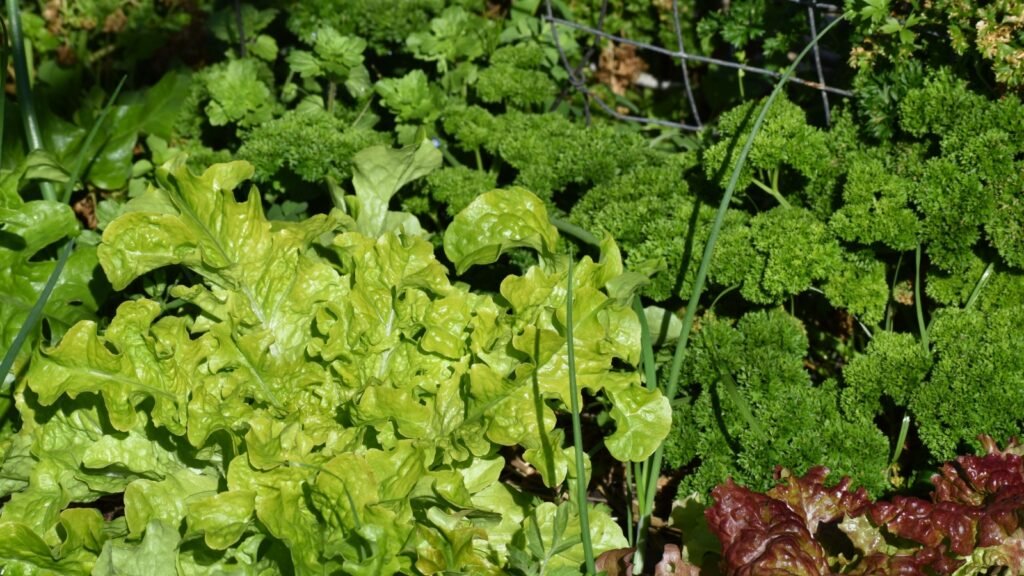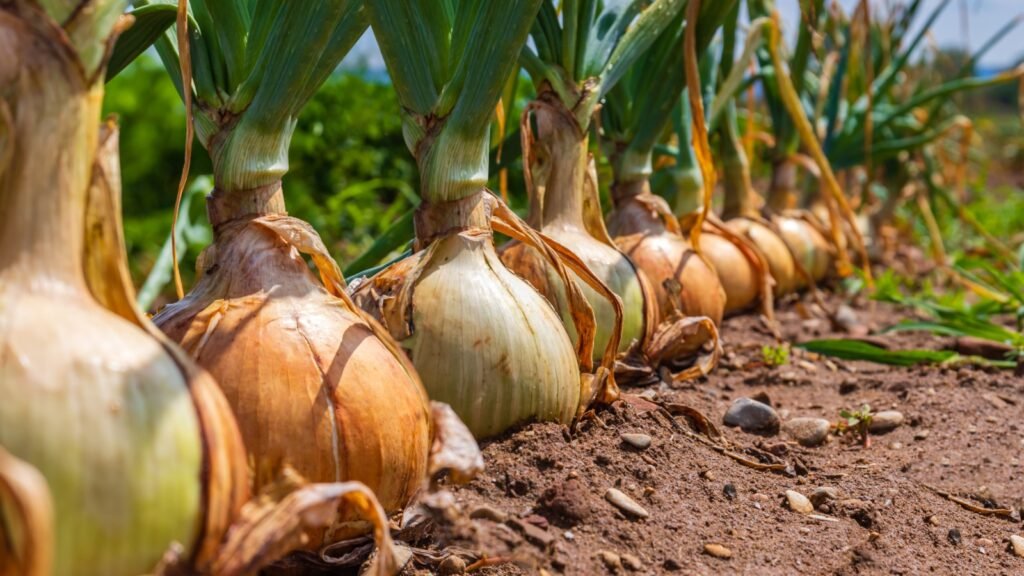Starting a survival garden can feel overwhelming, but it doesn’t have to be. I remember planting my first seeds, wondering if anything would actually grow. But let me tell you, there’s nothing quite like the feeling of biting into that first homegrown tomato. Whether you’re prepping for uncertain times or just want to be more self-sufficient, these 15 crops are perfect for beginners. They’re hardy, productive, and packed with nutrients to keep you going when the going gets tough. So grab your gloves and let’s dig in!
Tomatoes

Tomatoes are a garden staple for good reason. They’re versatile, nutritious, and relatively easy to grow. I’ve found that cherry tomatoes are particularly forgiving for beginners. They produce fruit quickly and keep producing throughout the season. One plant can yield up to 20 pounds of tomatoes, so a few plants will keep you in salads and sauces all summer long. For best results, plant your tomatoes deep – bury about 2/3 of the stem, as roots will form along the buried portion, creating a stronger plant.
Beans

Beans are nitrogen-fixers, which means they actually improve your soil while they grow. Bush beans are great for beginners because they don’t need support and produce quickly. A 10-foot row can yield about 4 pounds of beans. Plus, if you let some pods dry on the plant, you’ll have protein-rich dried beans for winter storage. Beans are also incredibly water-efficient, requiring only about 1 inch of water per week.
Zucchini

If you want to feel like a garden rockstar, grow zucchini. These plants are prolific producers – sometimes too prolific! Two or three plants will provide more than enough for a family. They’re ready to harvest in about 60 days and will keep producing until frost. Just make sure to harvest regularly to encourage more production. Don’t forget about the edible flowers – they’re delicious stuffed and fried!
Leafy Greens

Lettuce, spinach, and kale are fast-growing, nutrient-dense crops that are perfect for beginners. They can be harvested multiple times by taking outer leaves, giving you a continuous supply. Most greens are ready in 30-60 days and can be grown in partial shade, making them great for small spaces or less-than-ideal conditions. For a constant supply, sow new seeds every two weeks throughout the growing season.
Carrots

Carrots might seem tricky, but they’re actually quite forgiving. They can be planted early in spring and again in late summer for a fall crop. One square foot can produce about 1-2 pounds of carrots. The key is to keep the soil moist until they germinate. Once they’re up, they’re pretty low maintenance. To avoid forked carrots, make sure your soil is loose and free of rocks to a depth of at least 12 inches.
Radishes

Want near-instant gratification? Plant radishes. These spicy little roots are ready in just 3-4 weeks. They’re perfect for filling gaps between slower-growing crops and can be planted multiple times throughout the season. Plus, both the roots and leaves are edible, giving you more bang for your buck. Radishes are also great companion plants for cucumbers and squash, as they deter cucumber beetles.
Potatoes

Potatoes are survival food superstars. They’re calorie-dense and can be stored for months. You can grow them in the ground or in containers, making them suitable for any space. A single potato plant can produce 5-10 potatoes, depending on the variety and growing conditions. To maximize yield, “hill” your potatoes by mounding soil around the stems as they grow, which encourages more tubers to form.
Peas

Peas are another early crop that’s great for beginners. They prefer cooler weather, so plant them as soon as you can work the soil in spring. They’re nitrogen-fixers like beans, improving your soil for later crops. A 10-foot row can yield about 4-5 pounds of peas. For a continuous harvest, plant both snow peas and shelling peas – you’ll be eating the pods of snow peas while waiting for the shelling peas to mature.
Cucumbers

Cucumbers are fast-growing and high-yielding. They do need support to climb, but this actually saves space in your garden. A single plant can produce 10 or more cucumbers every couple of days at peak season. They’re great for fresh eating, pickling, or adding to your water for a refreshing drink. To avoid bitter cucumbers, ensure consistent watering – stress from uneven watering can cause bitterness.
Peppers

Bell peppers and hot peppers are both easy to grow and packed with vitamins. They take a bit longer to produce than some other vegetables, but they’ll keep producing until frost. One plant can yield 5-10 peppers, depending on the variety. Hot peppers are especially good for preserving. If you’re growing hot peppers, remember that stress (like slightly withholding water) can actually increase their heat level.
Onions

Onions are low-maintenance and store well, making them perfect for a survival garden. You can grow them from seeds, sets, or transplants. They’re ready to harvest when the tops fall over, usually in about 100 days. A 10-foot row can produce about 10 pounds of onions. For the best storage life, cure your onions by letting them dry in a warm, dry place for about two weeks after harvest.
Garlic

Garlic is incredibly easy to grow and has natural pest-repelling properties. Plant it in the fall for a summer harvest, or in early spring for a fall crop. Each clove you plant will produce a full head of garlic. Plus, you can eat the scapes (flower stalks) while you wait for the bulbs to mature. Garlic is a great companion plant for many vegetables, as its strong scent can deter pests.
Squash

Winter squash like butternut or acorn are great for long-term storage. They take up a lot of space but produce heavily. One plant can yield 5-10 squash, each weighing 1-3 pounds. They’re ready to harvest when the stem starts to crack and the skin is hard. To save space, try growing squash vertically on a trellis – even heavy varieties can be supported with slings made from old t-shirts or pantyhose.
Herbs

Herbs like basil, oregano, and thyme are easy to grow and pack a flavor punch. They can be grown in small spaces or even indoors. Many herbs have medicinal properties too, making them doubly useful in a survival situation. Plus, they’ll make your survival meals taste a whole lot better! Most herbs actually produce more when harvested regularly, so don’t be shy about using them.
Sweet Potatoes

Sweet potatoes are nutrient-dense and store well. They’re heat-loving and need a long growing season, but they’re relatively low-maintenance once established. A single plant can produce 3-5 pounds of sweet potatoes. The leaves are edible too, giving you greens while you wait for the tubers to mature. Sweet potatoes are great for erosion control and can be grown as a ground cover in larger gardens.

